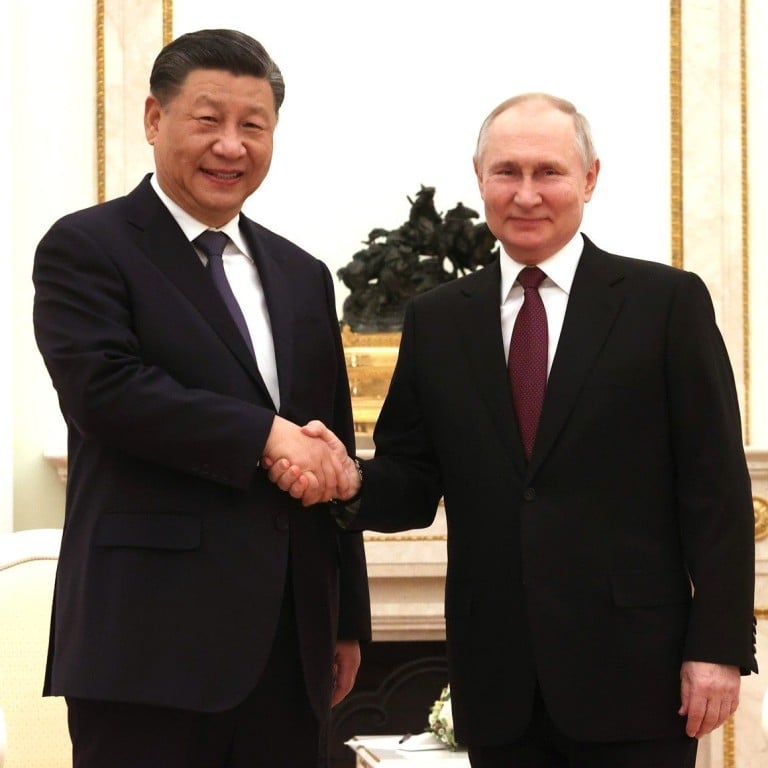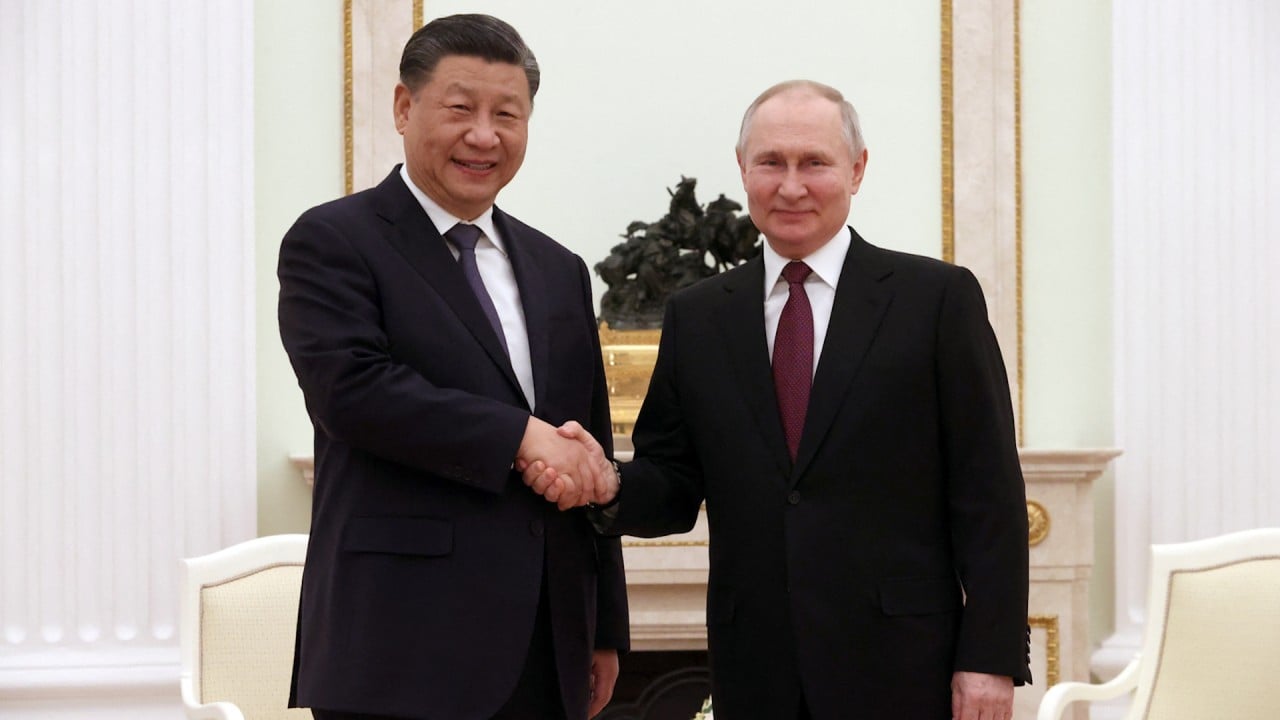
Explainer | What is the trade, investment relationship between China and Russia?
- President Xi Jinping has made his ninth visit to Moscow, again meeting with Russian counterpart Vladimir Putin
- Last year, bilateral trade between China and Russia rose by 29.3 per cent, year on year, to US$190.3 billion
Last year’s bilateral trade figure represented an increase of 116 per cent over a decade ago, as tensions with the United States and its allies over the Ukraine war have been pushing Russia and China closer.
In the past year, China replaced Europe to become Russia’s biggest buyer of its energy products, while Russia’s reliance on Chinese products – from computer chips to cars – has also increased.
What is the trade relationship between China and Russia?
China has been Russia’s biggest trading partner for 13 years, while for China, Russia ranked 10th in terms of overall value among countries and regions that it traded with last year.
Imports from Russia rose by 43.4 per cent, while Chinese exports increased by 12.8 per cent.
It was mostly bolstered by an increase in China’s purchases of Russian energy products.
Unlike with most other countries, China has a trade deficit with Russia, as energy trade is the most important aspect of their relationship.
Crude oil is the most valuable commodity in China-Russia trade, accounting for half of Chinese imports.
Russia is China’s biggest energy supplier and the second-biggest exporter of crude oil, after Saudi Arabia.
Last year, China’s crude imports from Russia increased by 8 per cent in volume, but 44 per cent in US dollar terms – a historic high driven by soaring energy prices amid the Ukraine war.
China-Russia trade keeps breaking records, but these hurdles still suppress it
Meanwhile, Russian exports of coal and natural gas – both liquefied and via pipelines – to China also surged in 2022.
While Chinese exports to Russia were subdued a little in the early days of the invasion – as demand shrank, uncertainties over shipping and payments soared and Chinese companies were wary of secondary sanctions – exports quickly picked up as Chinese products became the best option for Russia to fill the void left by Western companies.
More than 40 per cent of Chinese exports to Russia comprise various kinds of machinery and electrical equipment, from smartphones to large manufacturing equipment, according to Chinese customs data.
The two sides have also been striving to use their local currencies more in bilateral trade, to insulate themselves from Western pressure.
A breakthrough was made last year as they agreed to settle payments half in roubles and half in yuan for Russian natural gas supplies to China.
What is China’s investment in Russia?
Russia’s oil and gas industry has long been a major target for foreign direct investment. But before the Ukraine war, it was Europe - not China- that provided the bulk of foreign investment into Russia.
As of 2020, China’s investments in Russia were valued at US$12.07 billion, or a mere 9.9 per cent of what Europe invested in Russia, according to People’s Daily.
According to a report in December by the Eurasian Development Bank, Chinese investors have become more active in Russia, with China’s foreign direct investment (FDI) growing by 27.4 per cent from 2016-22.
But in the first half of 2022, China’s cumulative FDI in Russia increased by 75 per cent, according to state-owned news agency Sputnik, citing Russia’s first deputy prime minister, Andrey Belousov.

Belousov said the two sides would support more investment cooperation in oil and gas, chemicals, transport, infrastructure, green energy and advanced technology.
Last year, a number of joint infrastructure projects between the two countries were completed in Russia’s resource-rich Far East region.
The Heihe-Blagoveshchensk bridge over the Amur River was opened in June, while the maiden voyage of the Quanzhou-Fast East shipping line set sail in September. And the 2,200-metre (7,218-foot) Tongjiang-Nizhneleninskoye railway bridge was put into use in December.
But Western sanctions remain a large obstacle to further Chinese investment in the country, analysts said.


